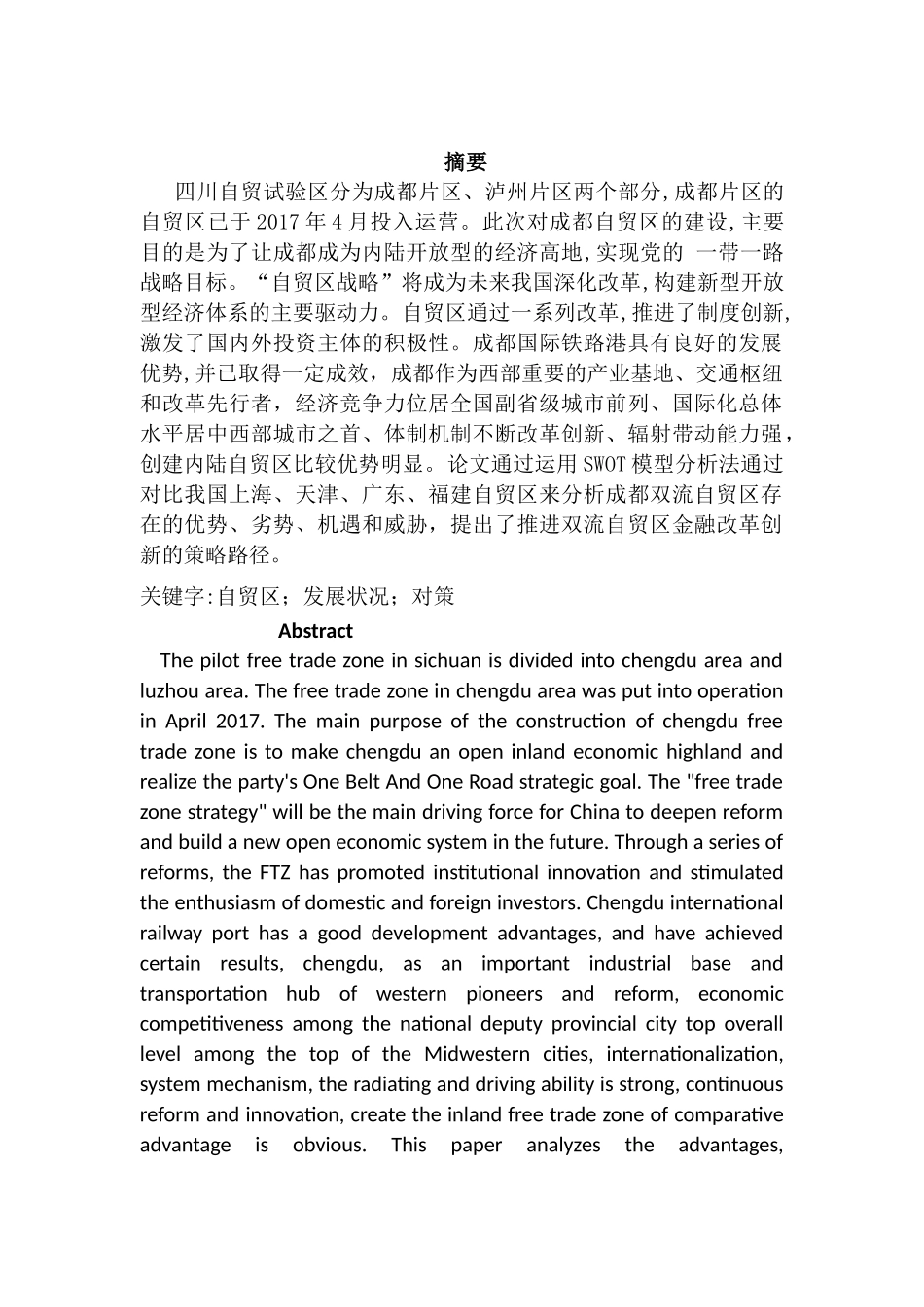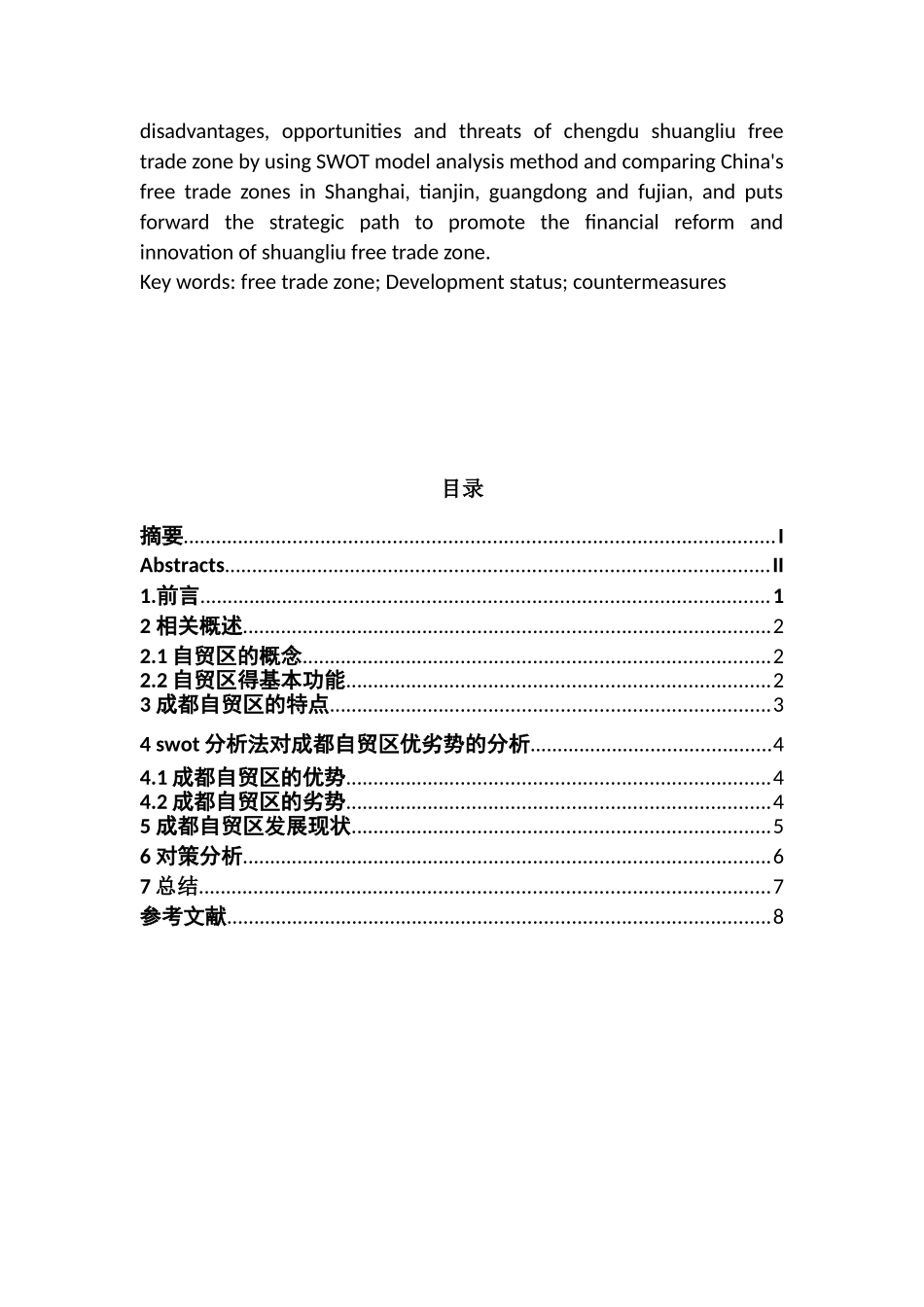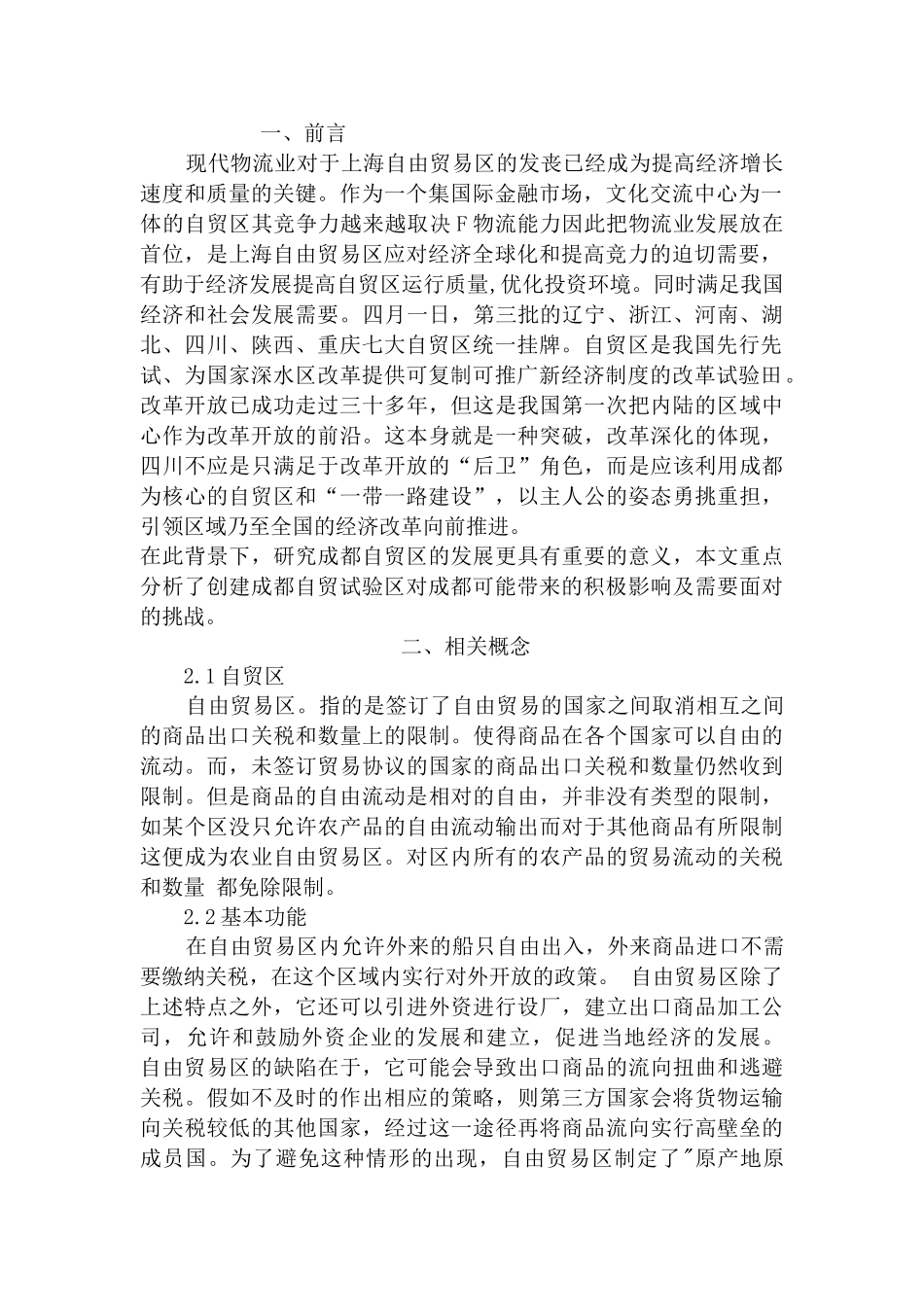摘要 四川自贸试验区分为成都片区、泸州片区两个部分,成都片区的自贸区已于 2017 年 4 月投入运营。此次对成都自贸区的建设,主要目的是为了让成都成为内陆开放型的经济高地,实现党的 一带一路 战略目标。“自贸区战略”将成为未来我国深化改革,构建新型开放型经济体系的主要驱动力。自贸区通过一系列改革,推进了制度创新,激发了国内外投资主体的积极性。成都国际铁路港具有良好的发展优势,并已取得一定成效,成都作为西部重要的产业基地、交通枢纽和改革先行者,经济竞争力位居全国副省级城市前列、国际化总体水平居中西部城市之首、体制机制不断改革创新、辐射带动能力强,创建内陆自贸区比较优势明显。论文通过运用 SWOT 模型分析法通过对比我国上海、天津、广东、福建自贸区来分析成都双流自贸区存在的优势、劣势、机遇和威胁,提出了推进双流自贸区金融改革创新的策略路径。关键字:自贸区;发展状况;对策 Abstract The pilot free trade zone in sichuan is divided into chengdu area and luzhou area. The free trade zone in chengdu area was put into operation in April 2017. The main purpose of the construction of chengdu free trade zone is to make chengdu an open inland economic highland and realize the party's One Belt And One Road strategic goal. The "free trade zone strategy" will be the main driving force for China to deepen reform and build a new open economic system in the future. Through a series of reforms, the FTZ has promoted institutional innovation and stimulated the enthusiasm of domestic and foreign investors. Chengdu international railway port has a good development advantages, and have achieved certain results, chengdu, as an important industrial base and transportation hub of western pioneers and reform, economic competitiveness among the national deputy provincial city top overall level among the top of the Midwestern cities, internationalization, system mechanism, the radiating and driving ability is strong, continuous reform and innovation...


